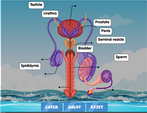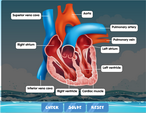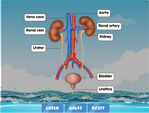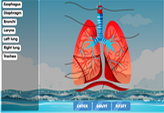Diagram of a volcano labelling quiz
Volcanoes are violent, but beautiful sights of a living Earth. They spew out hot, liquid rock called lava that turn into new islands and landmasses in the deep sea. Additionally, they heat up groundwater and hot springs, and power thermal plants to help people stay warm during winter.
Volcanoes are born when molten rock in the Earth’s mantle rises to the surface, creating a steady flow of lava and ash. Sometimes, this process is peaceful and quiet, but many volcanoes are formed when magma violently erupts and destroys its surroundings. These eruptions can be caused by pressure from plate tectonics – or the movement of the Earth’s plates.
A volcano has five basic parts. The source of the volcano’s lava comes from a magma chamber deep below the Earth. The magma moves upward through a passageway called a conduit, and exits through openings called vents. Many conduits can exist, so lava, ash, and other particles can flow out of many vents.
The main vent is usually surrounded by a bowl-like structure called a crater that forms from powerful explosions. Lava from the crater usually flows down the slopes, or the sides of the volcano.
You can use this diagram of a volcano labelling quiz as a helpful guide for studying the anatomy of a volcano, the different structures found above and beneath the surface, and their role in Earth’s evolution as a planet.











